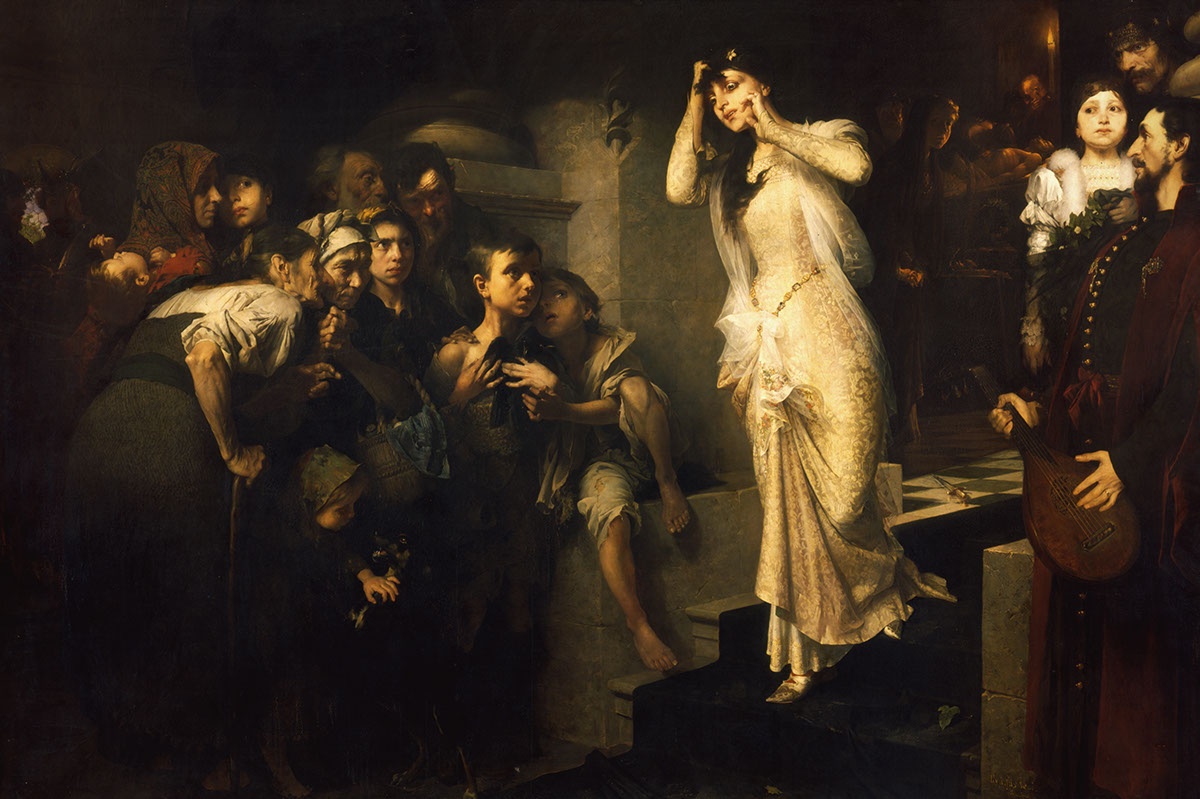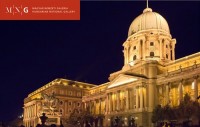Jenő Gyárfás’s painting illustrates a scene from János Arany’s ballad Ordeal of the Bier. The relatives and acquaintances of Benő Bárczi, who was killed with a dagger, pass by the displayed body in a line, in an attempt to discover the murderer. According to an ancient belief, if the killer walks by the dead body, he will begin to bleed. The people gathered are surprised when blood begins to flow as Benő’s bride, Abigél Kund approaches. Strictly speaking, Abigél did not kill her fiancé – rather, she playfully placed the dagger in his hand, after the young man had claimed he would gladly kill himself for her love. The painter was interested in depicting passion and madness and he prepared numerous sketches for Abigél’s face, experimenting with various expressions. With this work, the artist won the grand prize of the National Society for the Fine Arts and later donated it to the National Museum. The painting’s lavish frame, with some verses of the ballad Ordeal of the Bier appearing among the vines and fantastic figures, was also the work of Jenő Gyárfás.
en

